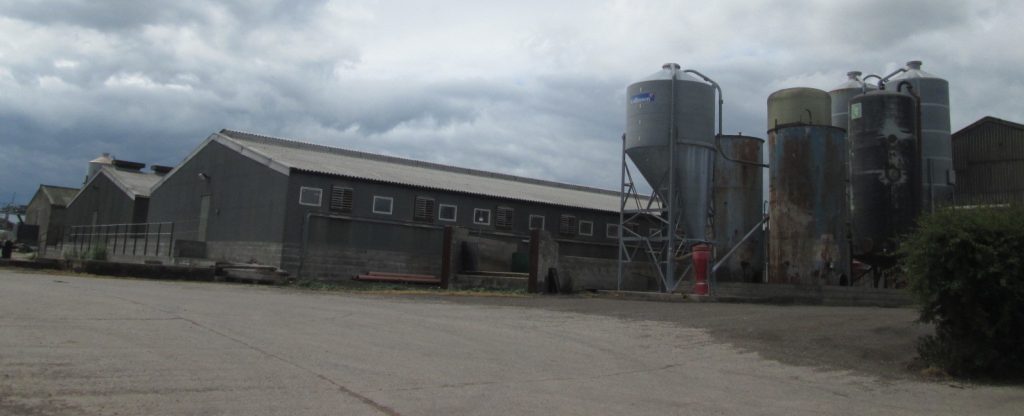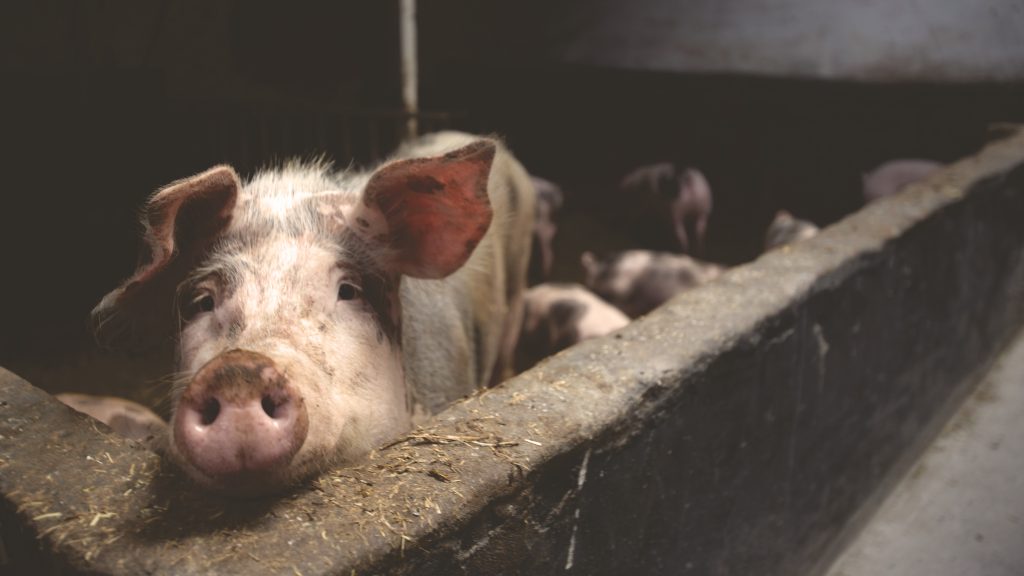Guidance to objecting to planning applications
Is there is an intensive farm looking to set up in your local area? Here is some general advice to help you to make a planning objection.

As a UK resident, you have the power to influence planning decisions in your local area by submitting an objection to the planning team at your local authority. If you want to object to plans outside your local area, it is best to check with the planning team before taking the time to write an objection.
The plans will usually be displayed on an online ‘planning portal’ which you can access. You simply search for the planning reference that is unique to that planning application. If you are unsure of the number, just give the planning team a call.
Planning objections have greater weight when individual letters and emails are submitted, rather than simply signing a petition. Petitions are good to show a strength of feeling against a proposal but do not carry so much weight in the decision process.
Usually you will have 21 days to respond to a planning application. Provisions for public consultation are outlined in your local authority’s Statement of Community Involvement (SCI), you can ask your local planning team about this.
Firstly, it is worth taking a good read through the planning application to become familiar with the scope and detail of it.

Unfortunately, at this point in time, animal welfare is not a consideration in the planning process. Feel free to highlight the potential for animal suffering that may be caused by the ‘farm’ but don’t focus too heavily on this aspect. It is better to pin your objection letter on a range of alternative points including:
- How the planned development doesn’t fit with the local surroundings in terms of use and design.
- The potential impact on road traffic, parking and general road safety.
- The anticipated negative impacts on amenity, including such things as nuisance, overlooking properties/ loss of privacy, loss of daylight, noise and light pollution.
- How the plan departs from the approved development plan for that area, for example, is it situated in a conservation area.
- The detrimental effect of the proposed development on the character of the local area: if it is overbearing, out of scale, out of character or goes against the local design guidance or policy (even the choice of materials or detailing).
- If it is within a ‘Conservation Area’ then the development could impact upon the character and the appearance of the area, or the heritage assets within.
- Potential negative environmental impacts.
Animal Aid’s objection to the Rufforth large scale intensive broiler chicken farm was centred on the following points. We hope this will give you some ideas that might be relevant to other similar applications.
Potential wildlife impact/ conflict
It is worth making contact with local wildlife and conservation groups to establish the following:
- The potential or actual presence of protected or priority species, namely great crested newts, badgers, bats and a variety of bird species.
- Sites of Special Scientific Interest (SSSI) within the area.
- The presence of plant communities of note, mature trees and established hedgerow.
Proximity to Ancient Woodland
- The presence of Ancient or semi-natural woodland.
The Greenbelt
The negative impact upon the openness and character of the local Green Belt.
Noise
- Noise disruption to nearby properties through a constant high level of noise from high velocity roof exhaust fans.
Air pollution and smell
- Air pollution from the ammonia particularly during the cleaning cycle.
- There are serious concerns for citizen’s health with ammonium nitrate created.
Visual obstruction/ scale of development
- The sizable poultry sheds and feed stores would certainly impact the visual landscape.
Geology/soils
- The presence of nearby arable land, which could be used to grow crops for human consumption.
Flood risk
- Flood risk, which if un-mitigated could lead to moderate adverse impact.
Groundwater/ Aquifer
- Whether site lies upon a principal aquifer, carried by the underlying bedrock.
- Groundwater resources which have been assessed to be highly sensitive to impacts.
- Concerns about contamination of local waterways endangering humans and wildlife.
- The presence of groundwater abstraction licences.
- The presence of local water courses such as streams.
Drinking water safeguard zone
- Whether the site is considered a ‘Safeguard Zone (Surface Water)’. (Visit the Environment Agency’s map)
Drainage and the potential for standing water
- The heavy nature of the soil creating standing surface water or the risk of flooding.
Nitrate Vulnerable Zone
- Check Defra’s ‘Magic Map’ and see if the site has any special classifications, such as being a ‘Nitrate Vulnerable Zone’.
Light pollution
- Concerns about light pollution, especially during operational times when surrounding trees and other vegetation are not in full leaf.
Socio-economic impacts
- Negative impacts on the local economy due to people not wishing to visit the area.
- Often large-scale animal intensive units may run on very few staff and offer little prospects for employment to local people.
Human health and safety
- Intensive poultry or pig farms can represent a serious health and safety hazard, since the crowded, dirty conditions form an ideal breeding ground for contagious diseases. Please do feel free to reference the Animal Aid Is Factory Farming Making Us Sick report.
- Zoonotic diseases may be transmitted from animals to workers, transferred to their families and friends then carried out into the wider community, putting health and potentially lives at risk.
- Do check if the development is near to an airfield.
Increased traffic
- If Heavy Goods Vehicles (HGVs) are anticipated to visit the site both during during construction works and once the site is operational, there could be an associated threat to local resident’s health and safety. Highlight if school children need to cross the road near to the site.
- Concerns about the impact of additional HGV traffic upon unsuitable rural roads.
Construction phase potential negative impacts
- There could be an increase in noise pollution and dust creation during the ‘build’ phase.
- There could be a potential for spillage of liquids and materials used during the construction works, through processes of handling and storage.
- There is also a potential for fuel and oil leaks from vehicles transporting plant and machinery to site which could contaminate land, surface waters and ground waters.
Operational phase potential negative impacts
- Potential spillage of fuel and oil leaks from vehicles, plant and machinery. Additionally, the potential spillage of kerosene which is to be used as a back-up fuel.
- There could be spillage of feed when collecting from feed silos and stray waste. This in turn could have a negative impact upon the wild bird population. Birds may be attracted to feed at the area and become victims of bird-strike from passing air traffic from any nearby aviation operations.
- Potential contamination of surrounding land from tainted water run-off from animal housing wash down.
The potential air quality impacts during the operational phase includes:
- The potential for dust, odour and ammonia from the operation.
- Vehicle exhaust emissions including nitrogen dioxide and particulate matter associated with Heavy Goods Vehicles and cars visiting the farm.
- Residual emissions from items such as the stacks serving the biomass boilers.
Animal Welfare concerns
- Cramped conditions inside the shed, with very little space for the animals to move around.
- Take a look to see if the company have had any other farms of theirs investigated and bad conditions uncovered, or have faced court action due to animal welfare or pollution incidents.
- Could it even be possible for a worker to adequately inspect hundreds/ thousands of animals at a time by just walking through a crowded shed of animals?
Animal Aid do not have the resource to take on each and every planning application that is submitted or is re-submitted, there are just too many of them and too few hours in the day. We really appreciate the commitment of our keen supporters who are challenging these applications in their local area.
We are happy to advise and promote your requests for others to object to planning applications in your area, as appropriate, just get in touch.